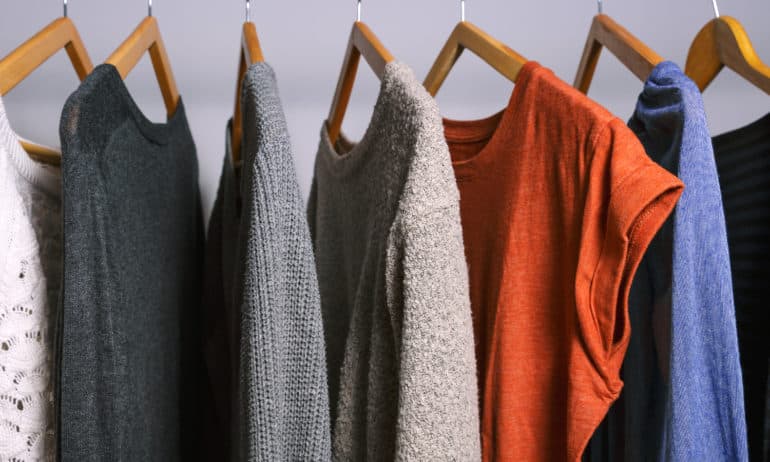Have you ever thought about what your clothes are made of? About who makes your clothes, or what happens after you donate them or throw them away? The truth about the fashion industry is actually pretty ugly.
A recent study by the Ellen McArthur Foundation found that one garbage truck of textiles is wasted every second. And the Copenhagen Fashion Summit reported that fashion is responsible for 92 million tons of solid waste dumped in landfills each year.
The fashion industry is also the second-biggest consumer of water, producing 20 percent of wastewater while also generating more greenhouse gas emissions than all international flights and maritime shipping combined.
Ahead of World Environment Day on June 5, themed “Beat Plastic Pollution,” it’s worth remembering that synthetic microfiber pollution is washing up in our oceans at alarming rates. Around 100,000 marine animals are killed each year by plastic waste, including microfibers.
We need to rethink our fast-fashion habit—we can’t continue to make clothes that do not consider our environment.
First, it’s up to apparel brands to take responsibility for the waste they’re creating. Brands need to address chemicals, use of textiles waste and synthetic fabrics that don’t break down, and unfair working environments in the clothing industry head-on.

The no-waste economy must be applied to fashion, just as it is in the food industry. We need action at each stage of the supply chain, starting with sustainable sourcing of fabrics, through to design, exploration of possible alternatives to distribution, and recovery and recycling of clothing.
Big brands are starting to take notice: Nike, H&M, Burberry, and Gap have all recently signed up to the Make Fashion Circular initiative. It aims to improve the industry’s record on sustainability and reduce global waste from fashion by recycling raw materials and products.
While recycling is certainly one solution, it is by no means the only solution. In fact, we should be asking a different question: how can we eliminate the need for recycling altogether? How can we design with the end in mind?
I’m developing a take-back program for my sustainable apparel brand, NOVEL SUPPLY CO., where we accept back our apparel at the end of its life and find alternative ways to use, recycle, and compost it. But as a global community, we also need to shift the way we consume fashion.
I currently source my fabrics from a Fair Ware mill in China, but this is not ideal. In general, richer countries are consuming fashion that is made and produced in poorer countries. But all countries are involved in the value chain.
In countries with emerging economies, there are an estimated 2 billion new consumers waiting to buy the latest trends. We are racing against the clock to include poorer countries in more sustainable manufacturing models, so they can produce clothing locally and more sustainably.
To shift typically linear take-make-waste fashion towards a circular model with no waste, we all need to be part of the movement to innovate and redesign our fashion industry. We can start by buying clothes with the circular economy in mind.
It’s up to us as consumers to trigger change by voting with our wallets. The average number of clothing collections in Europe more than doubled between 2000 and 2011: we are buying more clothes and wearing them less.
Our fast-fashion habit is expensive. More than US$500 billion in value is lost every year due to under-utilized clothes and lack of recycling. We as consumers need to educate ourselves about Circular fashion: we need to buy less clothing and when we do, we need to make sure that is more sustainable and higher quality. We also need to demand transparent sourcing.
It will take time for the fast-fashion industry to slow down. The trends already set in motion by the Make Fashion Circular initiative and others are starting to gather steam. But to stop stretching our planet, we all need to play our part.
Consume consciously and responsibly by reading the labels before you purchase. Be sure to look for natural and organic fibers, non-toxic dyes, take-back programs, and ethical production. And participate in the Digital Summit on Sustainable Fashion and Supply Chains on May 30 to educate yourself about slow fashion and where to get it. We need you!











